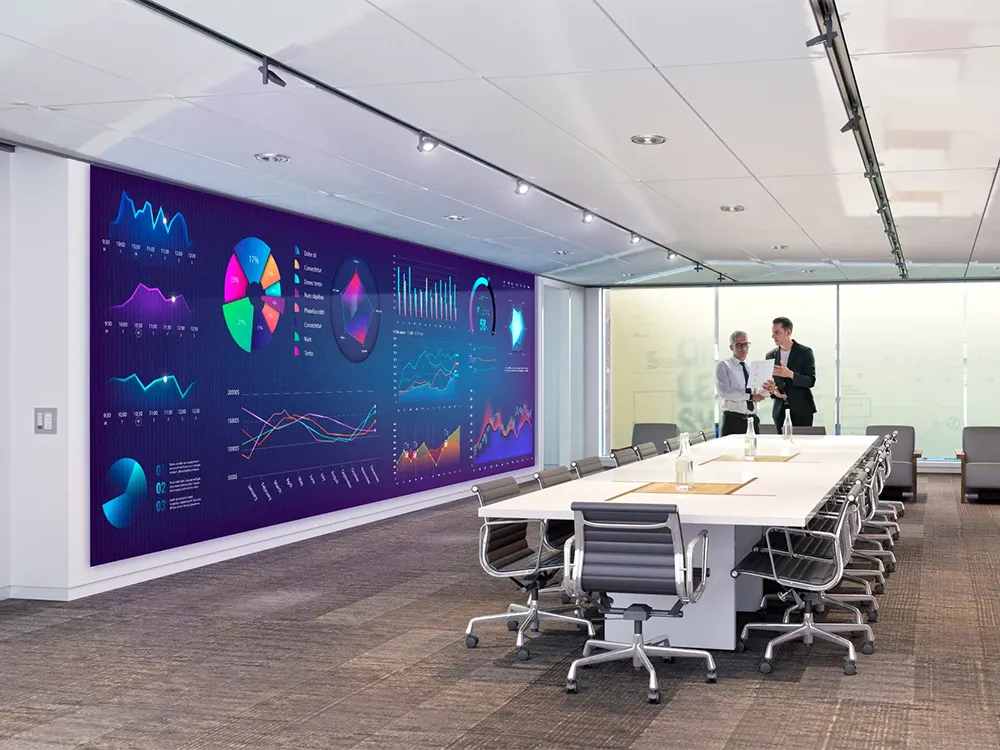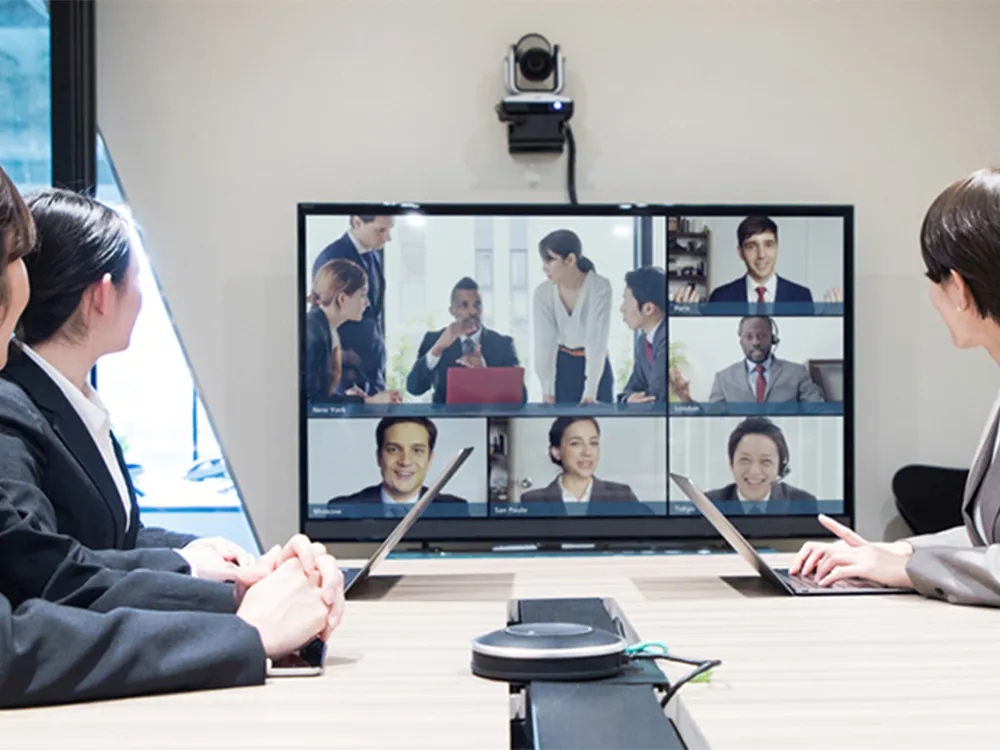Integrating Smart Solutions for Smarter Workspaces
In the modern business landscape, creating a smart workspace is no longer a luxury but a necessity. As technology continues to evolve, companies are increasingly integrating
smart solutions to enhance productivity, improve employee satisfaction, and stay competitive. This blog post explores the various ways smart solutions can be integrated into workspaces and the transformative impact they can have on business operations.
 1. Enhancing Collaboration with Smartboards
Smartboards
1. Enhancing Collaboration with Smartboards
Smartboards are at the forefront of transforming traditional meeting rooms into dynamic collaboration spaces. These interactive displays allow team members to interact with content in real-time, whether they are in the same room or connected remotely. By integrating smartboards, businesses can facilitate brainstorming sessions, presentations, and collaborative projects more effectively.
Key Benefits:
- Real-Time Collaboration: Employees can work on the same document simultaneously, making changes and annotations that everyone can see instantly.
- Improved Engagement: Interactive displays make meetings more engaging, encouraging participation and creativity.
- Remote Connectivity: With integrated video conferencing tools, remote team members can join the conversation seamlessly.
2. Communicating with Digital Signage
Digital signage is a powerful tool for enhancing communication within the workplace. From displaying important announcements and company news to providing wayfinding information, digital signage keeps employees informed and engaged.
Key Benefits:
- Instant Updates: Information can be updated in real-time, ensuring that employees always have access to the latest news and announcements.
- Visual Appeal: Digital displays are more engaging than traditional bulletin boards, capturing employees’ attention.
- Versatility: Digital signage can be used for a variety of purposes, from HR announcements to displaying motivational messages.
3. Creating Impact with LED Screens and Video Walls
LED screens and video walls are ideal for creating impactful presentations and enhancing the visual appeal of workspaces. These high-definition displays provide vibrant, clear images that can be used for presentations, video conferencing, and digital signage.
Key Benefits:
- High Visibility: LED screens and video walls are highly visible and can display content that grabs attention.
- Versatility: These displays can be used for a range of applications, from presentations to displaying real-time data.
- Enhanced Collaboration: Large screens are ideal for collaborative work, allowing multiple team members to view and interact with content simultaneously.
4. Facilitating Remote Meetings with Video Conferencing Solutions
Video conferencing solutions are essential for modern workplaces, enabling seamless communication between remote teams. These systems integrate with smartboards and LED screens to provide a comprehensive communication platform.
Key Benefits:
- Enhanced Communication: High-quality video and audio ensure clear communication between team members.
- Flexibility: Video conferencing allows employees to join meetings from any location, promoting remote work.
- Collaboration: Integrated tools like screen sharing and virtual whiteboards enhance collaborative efforts.
 5. Engaging Customers with Floor-Standing Kiosks
5. Engaging Customers with Floor-Standing Kiosks
Floor-standing kiosks provide an interactive way for businesses to engage with customers and visitors. These kiosks can be used for check-ins, information dissemination, and self-service tasks.
Key Benefits:
- Customer Engagement: Interactive kiosks attract and engage customers with interactive content.
- Efficiency: Self-service options reduce wait times and improve customer satisfaction.
- Data Collection: Kiosks can collect valuable data on customer interactions, providing insights for business improvement.
6. Managing Content with Videowall Controllers and Media Players
Videowall controllers and media players are essential for managing content displayed on video walls and digital signage. These devices ensure that content is displayed smoothly and can be easily updated.
Key Benefits:
- Content Management: Easily manage and update content across multiple displays from a single interface.
- Synchronization: Ensure that content is synchronized across all displays for a cohesive visual experience.
- Flexibility: Media players support various content formats and can display live feeds, videos, and interactive content.
7. Improving Efficiency with Self-Service Kiosks
Self-service kiosks streamline various tasks within the workplace, from visitor check-ins to employee time tracking. These kiosks enhance efficiency by automating routine processes.
Key Benefits:
- Time Savings: Automated processes reduce the time employees spend on routine tasks.
- Accuracy: Self-service kiosks reduce errors associated with manual data entry.
- Convenience: Employees and visitors can complete tasks quickly and easily using self-service kiosks.
 Conclusion
Conclusion
Integrating smart solutions into workspaces is a game-changer for businesses looking to enhance productivity, efficiency, and employee satisfaction. From smartboards and digital signage to LED screens and self-service kiosks, the possibilities are endless. By embracing these technologies, companies can create smarter workspaces that not only meet the needs of today but also anticipate the demands of tomorrow. As the workplace continues to evolve, staying ahead with smart solutions will be key to maintaining a competitive edge
 1. Enhancing Collaboration with Smartboards
Smartboards are at the forefront of transforming traditional meeting rooms into dynamic collaboration spaces. These interactive displays allow team members to interact with content in real-time, whether they are in the same room or connected remotely. By integrating smartboards, businesses can facilitate brainstorming sessions, presentations, and collaborative projects more effectively.
Key Benefits:
1. Enhancing Collaboration with Smartboards
Smartboards are at the forefront of transforming traditional meeting rooms into dynamic collaboration spaces. These interactive displays allow team members to interact with content in real-time, whether they are in the same room or connected remotely. By integrating smartboards, businesses can facilitate brainstorming sessions, presentations, and collaborative projects more effectively.
Key Benefits:
 5. Engaging Customers with Floor-Standing Kiosks
Floor-standing kiosks provide an interactive way for businesses to engage with customers and visitors. These kiosks can be used for check-ins, information dissemination, and self-service tasks.
Key Benefits:
5. Engaging Customers with Floor-Standing Kiosks
Floor-standing kiosks provide an interactive way for businesses to engage with customers and visitors. These kiosks can be used for check-ins, information dissemination, and self-service tasks.
Key Benefits:
 Conclusion
Integrating smart solutions into workspaces is a game-changer for businesses looking to enhance productivity, efficiency, and employee satisfaction. From smartboards and digital signage to LED screens and self-service kiosks, the possibilities are endless. By embracing these technologies, companies can create smarter workspaces that not only meet the needs of today but also anticipate the demands of tomorrow. As the workplace continues to evolve, staying ahead with smart solutions will be key to maintaining a competitive edge
Conclusion
Integrating smart solutions into workspaces is a game-changer for businesses looking to enhance productivity, efficiency, and employee satisfaction. From smartboards and digital signage to LED screens and self-service kiosks, the possibilities are endless. By embracing these technologies, companies can create smarter workspaces that not only meet the needs of today but also anticipate the demands of tomorrow. As the workplace continues to evolve, staying ahead with smart solutions will be key to maintaining a competitive edge






